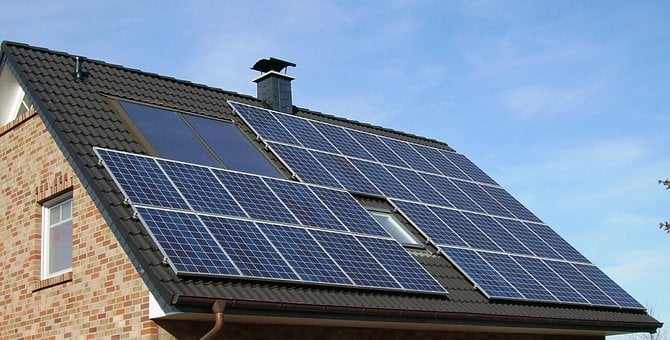
No matter where you live, it’s becoming harder and harder to ignore the effects of climate change. Natural disasters like wildfires and floods are increasing in frequency, and they’re happening in abnormal places. Reading the headlines these days might feel daunting, but there are still plenty of reasons to be positive.
Many advances in modern technology have been developed with the environment in mind. Between rising global temperatures, burgeoning landfills, dwindling water supplies, and more, many people are looking for ways to create a safer, healthier planet. Here are six exciting ways technology is having a positive impact on our world.
1. Solar Panels Provide an Alternative to Fossil Fuels
Sunlight (News - Alert) is a natural energy source that does not result in any greenhouse gas emissions. Solar panels harness this energy, allowing people to power their homes, offices, and — in the not-too-distant future — even their vehicles.
Structures that receive four or more hours of direct sunlight each day are ideal candidates for solar panels. In recent years, solar installation has become more accessible for the average homeowner or business owner. Some installers employ affordable leasing models, while federal and state governments offer tax credits to encourage solar panel use. Once solar panels are installed, they help cut back on monthly electricity costs, making them both financially and environmentally beneficial.
Scientists and entrepreneurs are also in the early stages of developing solar-powered vehicles. Once they hit the market, they will provide consumers with a new environmentally friendly transportation option. Another exciting early-stage innovation is the concept of solar roads. These would use solar panels to create highways that can power the surrounding electricity grid.
2. Electric Vehicles Reduce Emissions
The average passenger vehicle emits 4.6 metric tons of carbon dioxide each year. Electric vehicles are providing a lower-emission alternative that still lets consumers hit the road unhindered. Many popular consumer auto brands are expanding their lines of electric vehicles, making them increasingly accessible to the general public.
It’s not just cars that are going electric — buses and trains are, too. Cities around the world are converting their bus fleets to electric models, making public transit still more eco-friendly. Many streetcar and subway systems also use electricity to power their trains.
Airplanes are responsible for a significant portion of greenhouse gas emissions around the world. However, several aviation startups are exploring the possibility of electric planes. While these planes are far from ready to hit the market, they present an exciting possibility for the future.
3. Cloud Technology Cuts Back on Paper Waste
Just a few decades ago, paper documents were the norm at work, school, and home. Unfortunately, excess paper use results in deforestation and unnecessary waste. However, cloud technology and other digital solutions have helped our society cut back on paper use in a variety of ways.
Now workers can create and share important files using the cloud, rather than printing or faxing them. Gone are the filing cabinets full of forests’ worth of hard copy documents. Emails, texts, and social media messages also make it easy to communicate sans paper.
Many organizations have moved away from direct mail marketing to email newsletters and digital ads. Another helpful solution is automatic paperless billing. Not only does this cut back on paper waste, but it also makes paying bills much faster and more convenient.
4. Drones Support Environmental Monitoring Efforts
Aerial drones have been an invaluable tool for tracking the effects of climate change. Drones can travel to areas that are not accessible via ground transportation or airplanes. They provide a helpful vantage point for monitoring ongoing environmental concerns.
For example, drones are often used to monitor deforestation. They identify illegal logging activity and pinpoint vulnerable areas for conservation efforts. Drones can even be used to plant trees and crops from the air.
Drones have also been particularly helpful for tracking wildfires. They use infrared technology to identify fire locations and predict where they will spread. This helps local fire departments respond more efficiently to fires and keep their communities safe.
5. IoT Technology Minimizes Home Energy Use
The Internet of Things, or IoT, is a group of products that connect to the internet and have “smart” features. One of the most popular examples of IoT technology is the smart home system.
Smart home systems use sensors and other automated technology to turn off lights and automatically adjust the temperature in your home. This helps cut back on electricity and natural gas consumption, thus reducing your overall impact on the environment.
Users can also connect televisions, computers, and other electronic devices to their smart home controllers to further optimize their energy use. Some smart homes go so far as to provide tailored suggestions to help homeowners save even more energy.
6. App-Driven Sharing Economy Reduces Waste
Sharing economy apps connect users with others in their area to share resources. In doing so, these apps reduce waste in a variety of ways. They also help users save money and build community.
One example of this is clothing resale apps. Apps like Poshmark, Plato’s Closet, and Depop give users an easy way to sell their used clothes, rather than throwing them away. And by buying secondhand, eco-conscious fashionistas avoid fast fashion, which produces 10% of the world’s carbon emissions.
Another excellent example of this trend is food-sharing apps like Too Good to Go. This app allows restaurants, bakeries, and grocery stores to share low-cost boxes of leftovers with local consumers. This prevents food from going to waste and allows consumers to enjoy a delicious meal at a low cost.
Final Thoughts
Many people understandably find the thought of climate change, garbage patches, and other ecological devastations overwhelming. Fortunately, the innovative technologies outlined above are having tangible, positive impacts on the planet. Embracing them will allow consumers and society at large to help the environment, rather than harm it.
